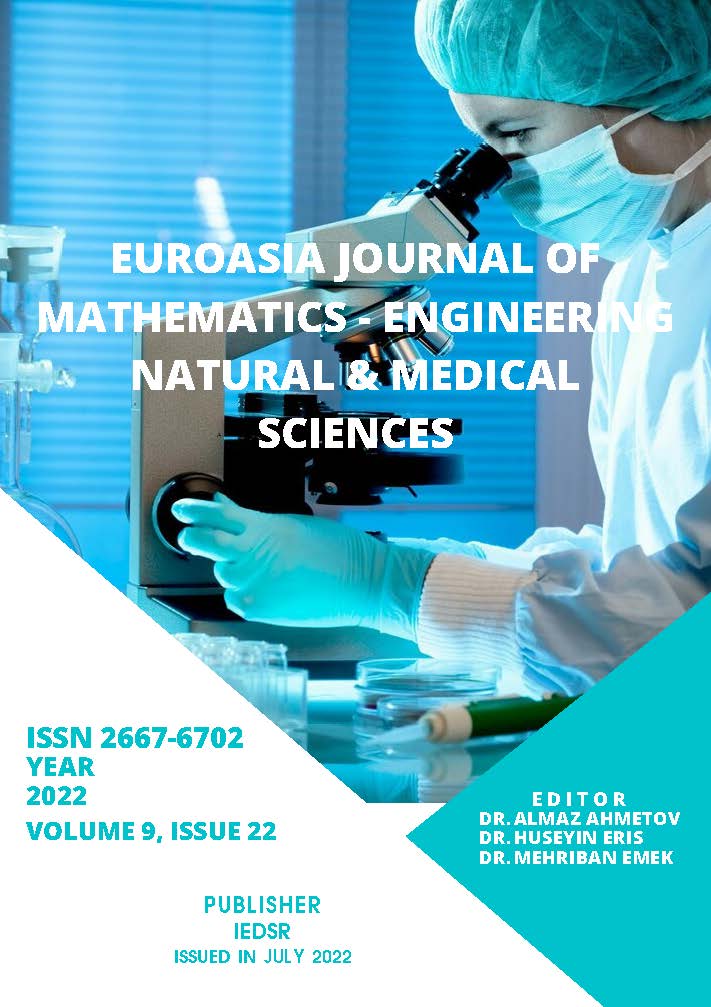Atık Biyokütleden (Acı Kırmızı Biber Sapları) Üretilen Aktif Karbonun Yüzey-Gözenek Yapısına Mikrodalga Yönteminin Etkisi
DOI:
https://doi.org/10.5281/zenodo.6948282Anahtar Kelimeler:
Atık biyokütle, İsot biberi atık sapları, Mikrodalga fırın, Aktif karbonÖzet
Aktif karbonun, çevresel kirleticilerin adsorpsiyon işlemi ile giderilmesinde yaygın olarak kullanılan adsorbent malzeme olduğu yapılan birçok çalışma ile kanıtlamıştır. Son yıllarda atık biyokütle kaynakları kullanılarak aktif karbon üretimi özellikle atık bertarafı ve yüksek gözenekli, ucuz adsorbent eldesi gibi avantajları nedeniyle tercih edilmektedir. Atık biyokütleler doğada bol miktarda bulunan özellikle tarımsal ürünlerin kullanılması ve işlenmesi sonucu ortaya çıkmaktadır. Türkiye’de ise özellikle baharat üretiminde yaygın olarak kullanılan acı kırmızı biber (Capsicum annuum L.) bu tarımsal ürünlerden biridir. Türkiye’de üretilen biberlerin büyük bir kısmı güneydoğu bölgesinde yetiştirilmektedir. Bu bölgenin en önemli biberi Şanlıurfa ilinde yetişen ve coğrafi işaret yönetmelikleri ile belgelenen isot biberidir. İsot biberi sap ve tohumları etli kısımlarından ayrılarak baharat üretiminde yaygın olarak kullanılmaktadır. Bu çalışma kapsamında atık olarak değerlendirilen isot saplarını kullanarak iki farklı yöntem ile aktif karbon üretimi gerçekleştirilmiştir. İlk yöntemde isot sapları %100 oranında ZnCl2 (çinko klorür), H3BO3 (borik asit) ve H3PO4 (fosforik asit) ile 24 saat impregnasyon işlemine tabi tutulmuştur. İkinci yöntemde ise %100 oranında H3PO4 (fosforik asit) kimyasalı uygulanan isot sapları CO2 gazı ile inert edilen mikrodalga fırın ortamında 500 W dalga gücünde 15 dk süreyle impregnasyon işlemine tabi tutulmuştur. Her iki yöntem sonrası isot sapları N2 gazı ile inert edilen bir kül fırınında (650 ºC, 30 dk) aktivasyon işlemine tabi tutulmuştur. İki farklı yöntemle isot saplarından üretilmiş aktif karbonlarının gözenek boyutu ve yüzey alanı tespiti için BET, yapısındaki fonksiyonel grupların tespiti için FT-IR ve yüzey morfolojik görüntülerinin elde edilmesi için SEM analizleri kullanılarak yapılmıştır. Elde edilen sonuçlara göre atık isot saplarından ucuz ve çevre dostu adsorbentler üretilerek hem atık bertarafı yapılmış hem de katma değeri yüksek ürün elde edilmiştir.
Referanslar
Baytar, O. Ş. (2018). Characterization of Microwave and Conventional Heating on the Pyrolysis of Pistachio Shells for the Adsorption of Methylene Blue and Iodine. Analytical Letters,, 51(14), 2205–2220. https://doi.org/10.1080/00032719.2017.1415920.
Chairunnisa, F. M. (2020). Enhancing water adsorption capacity of acorn nutshell based activated carbon for adsorption thermal energy storage applicatio. Energy Reports, Volume 6, Supplement 7, Pages 255-263, doi.org/10.1016/j.egyr.2020.11.038.
Dolas H, S. O. (2010). A New Method on Producing of Activated Carbon: The Effect of Salt on The Surface Area and The Pore Size Distribution of Activated Carbon Prepared Pistachio Shell. Chemical Engineering Journal, 166, 191-197, https://doi.org/10.1016/j.cej.2010.10.061.
Iván Costa-Trigo, A. P.-P. (2020). Detoxification of chestnut burrs hydrolyzates to produce biomolecules,. Biochemical Engineering Journal, Volume 159, 107599, doi.org/10.1016/j.bej.2020.107599.
J.Plank, B. J. (2010). Experimental determination of the thermodynamic parameters affecting the adsorption behaviour and dispersion effectiveness of PCE superplasticizers,. Cement and Concrete Research,, Volume 40, Issue 5, Pages 699-709. doi.org/10.1016/j.cemconres.2009.12.002.
Jean-François, B. A. (2008). On the protonation of oxo- and hydroxo-groups of the goethite (α-FeOOH) surface: A FTIR spectroscopic investigation of surface O–H stretching vibrations, . Geochimica et Cosmochimica Acta, Volume 72, Issues 14, Pages 3338-3357, doi.org/10.1016/j.gca.2008.04.022.
Khaled Zoroufchi Benis, A. S. (2022). A binary oxide-biochar composite for adsorption of arsenic from aqueous solutions: Combined microwave pyrolysis and electrochemical modification,. Chemical Engineering journal, Volume 446, Part 2, 137024, doi.org/10.1016/j.cej.2022.137024.
Korkmaz, A. H. (2017). Evaluation of the volatile compounds of fresh ripened Capsicum annuum and its spice pepper (dried red pepper flakes and isot). LWT, 84, 842–850. https://doi.org/10.1016/j.lwt.2017.06.058.
Ositadinma Chamberlain Iheanacho, J. T. (2021). Packed bed column adsorption of phenol onto corn cob activated carbon: linear and nonlinear kinetics modeling,. South African Journal of Chemical Engineering, Volume 36, Pages 80-93. doi.org/10.1016/j.sajce.2021.02.003.
Sandro Altenor, B. C.-J. (2009). Adsorption studies of methylene blue and phenol onto vetiver roots activated carbon prepared by chemical activation,. Journal of Hazardous Materials, Volume 165, Issues 1-3, Pages 1029-1039, doi.org/10.1016/j.jhazmat.2008.10.133.
Shuang Zhang, Y. M. (2022). Clean production of N, O-doped activated carbon by water vapor carbonization/activation of expired coffee for high-volumetric supercapacitor, . Applied Surface Science , Volume 589,Pages 153011, doi.org/10.1016/j.apsusc.2022.153011.
Wahyu Widanarto, S. I. (2022). Improved microwave absorption traits of coconut shells-derived activated carbon, . Diamond and Related Materials, Volume 126,109059, doi.org/10.1016/j.diamond.2022.109059.
Zha Wei, L. B. (2022). Construction of Pingdingshan coal molecular model based on FT-IR and 13C-NMR,. Journal of Molecular Structure, Volume 1262, Pages 132992, doi.org/10.1016/j.molstruc.2022.132992.
Zhuanglei Zou, M. Y. (2015). Airflow resistance and bio-filtering performance of carbon nanotube filters and current facepiece respirators,. Journal of Aerosol Science, Volume 79, Pages 61-71, doi.org/10.1016/j.jaerosci.2014.10.003.
İndir
Yayınlanmış
Nasıl Atıf Yapılır
Sayı
Bölüm
Lisans
Telif Hakkı (c) 2022 Euroasia Journal of Mathematics, Engineering, Natural & Medical Sciences

Bu çalışma Creative Commons Attribution-NonCommercial 4.0 International License ile lisanslanmıştır.


